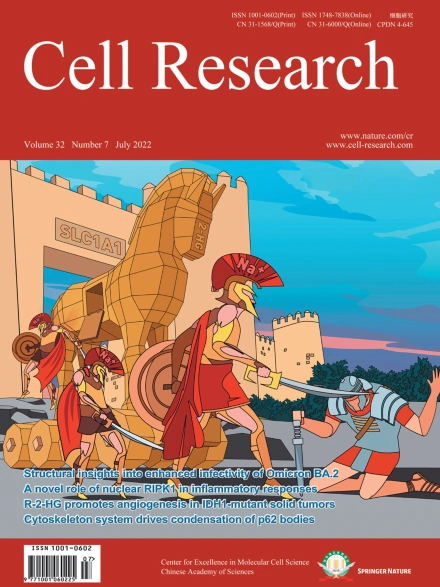
Advanced Search
Submit Manuscript
Advanced Search
Submit Manuscript
Volume 32, No 7, Jul 2022
ISSN: 1001-0602
EISSN: 1748-7838 2018
impact factor 17.848*
(Clarivate Analytics, 2019)
Volume 32 Issue 7, July 2022: 659-669
Myosin 1D and the branched actin network control the condensation of p62 bodies
Xuezhao Feng1,2,† , Wanqing Du3,† , Mingrui Ding4,† , Wenkang Zhao3 , Xirenayi Xirefu1,2,5 , Meisheng Ma6 , Yuhui Zhuang7 , Xiaoyu Fu8 , Jiangfeng Shen7 , Jinpei Zhang1,2 , Xiuying Lei1,2 , Daxiao Sun3 , Qing Xi1,2 , Yiliyasi Aisa1,2,5 , Qian Chen1,2 , Ying Li3,9 , Wenjuan Wang9 , Shanjin Huang7 , Li Yu3 , Pilong Li4,* , Na Mi1,2,*
1State Key Laboratory of Pathogenesis, Prevention and Treatment of Central Asian High Incidence Diseases, Clinical Medical Research Institute, The First Affiliated Hospital of Xinjiang Medical University, Urumqi, Xinjiang, ChinaBiomolecular condensation driven by liquid–liquid phase separation (LLPS) is key to assembly of membraneless organelles in numerous crucial pathways. It is largely unknown how cellular structures or components spatiotemporally regulate LLPS and condensate formation. Here we reveal that cytoskeletal dynamics can control the condensation of p62 bodies comprising the autophagic adaptor p62/SQSTM1 and poly-ubiquitinated cargos. Branched actin networks are associated with p62 bodies and are required for their condensation. Myosin 1D, a branched actin-associated motor protein, drives coalescence of small nanoscale p62 bodies into large micron-scale condensates along the branched actin network. Impairment of actin cytoskeletal networks compromises the condensation of p62 bodies and retards substrate degradation by autophagy in both cellular models and Myosin 1D knockout mice. Coupling of LLPS scaffold to cytoskeleton systems may represent a general mechanism by which cells exert spatiotemporal control over phase condensation processes.
https://doi.org/10.1038/s41422-022-00662-6